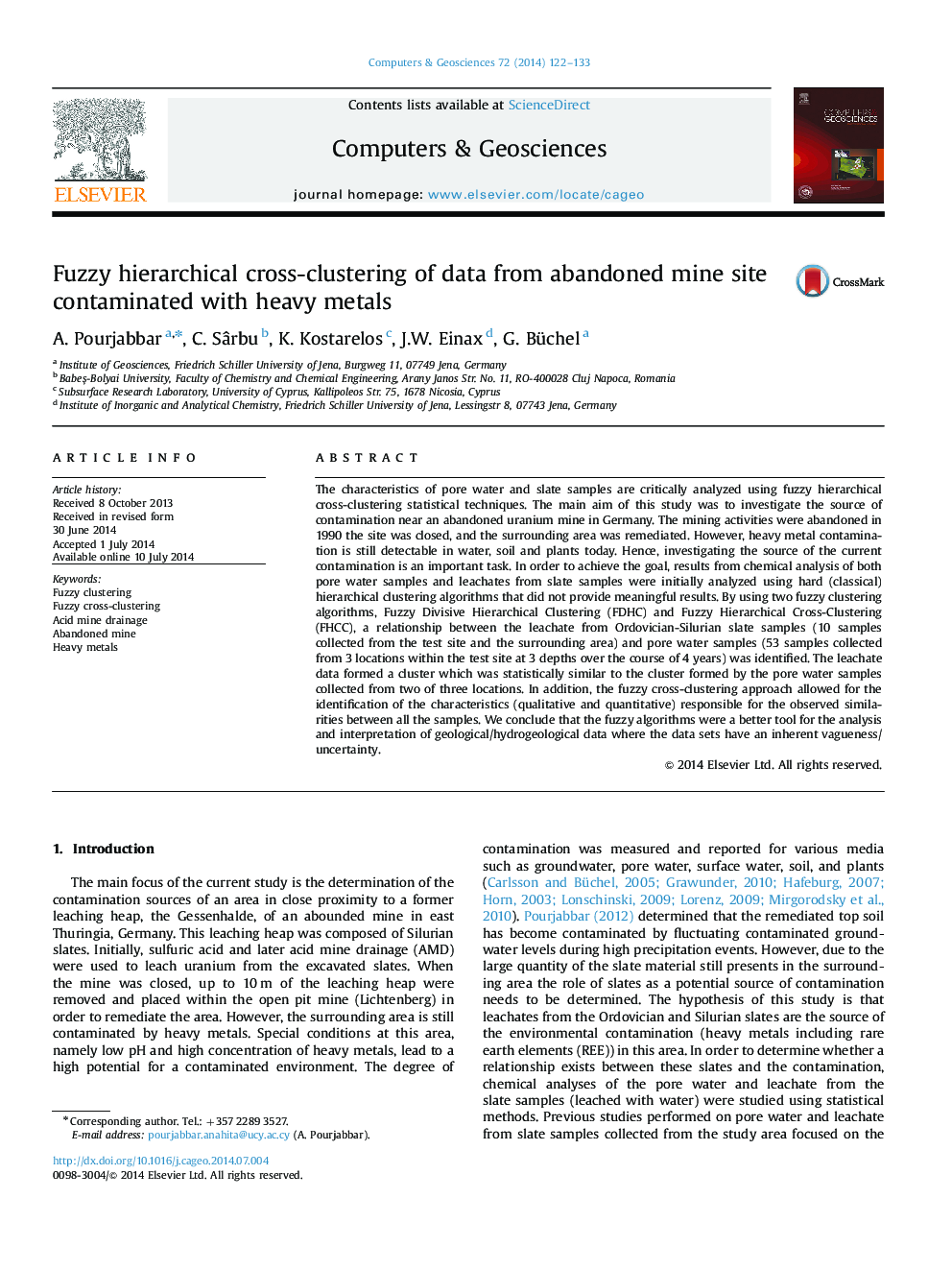| کد مقاله | کد نشریه | سال انتشار | مقاله انگلیسی | نسخه تمام متن |
|---|---|---|---|---|
| 507327 | 865116 | 2014 | 12 صفحه PDF | دانلود رایگان |
• The source of heavy metals contamination was investigated at an abandoned uranium mine.
• Hard hierarchical clustering algorithms did not provide meaningful results.
• Fuzzy divisive hierarchical clustering and Fuzzy hierarchical cross-clustering provided meaningful results.
• A relationship between the leachate from slate and pore water samples was established.
The characteristics of pore water and slate samples are critically analyzed using fuzzy hierarchical cross-clustering statistical techniques. The main aim of this study was to investigate the source of contamination near an abandoned uranium mine in Germany. The mining activities were abandoned in 1990 the site was closed, and the surrounding area was remediated. However, heavy metal contamination is still detectable in water, soil and plants today. Hence, investigating the source of the current contamination is an important task. In order to achieve the goal, results from chemical analysis of both pore water samples and leachates from slate samples were initially analyzed using hard (classical) hierarchical clustering algorithms that did not provide meaningful results. By using two fuzzy clustering algorithms, Fuzzy Divisive Hierarchical Clustering (FDHC) and Fuzzy Hierarchical Cross-Clustering (FHCC), a relationship between the leachate from Ordovician-Silurian slate samples (10 samples collected from the test site and the surrounding area) and pore water samples (53 samples collected from 3 locations within the test site at 3 depths over the course of 4 years) was identified. The leachate data formed a cluster which was statistically similar to the cluster formed by the pore water samples collected from two of three locations. In addition, the fuzzy cross-clustering approach allowed for the identification of the characteristics (qualitative and quantitative) responsible for the observed similarities between all the samples. We conclude that the fuzzy algorithms were a better tool for the analysis and interpretation of geological/hydrogeological data where the data sets have an inherent vagueness/uncertainty.
Journal: Computers & Geosciences - Volume 72, November 2014, Pages 122–133
